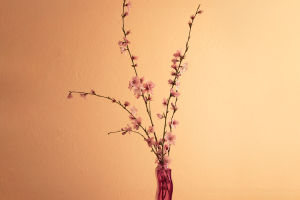Lavender, with its delicate purple flowers and soothing fragrance, is a favorite among plant enthusiasts, and for good reason. This aromatic plant brings a sense of calm and beauty to any space, whether it’s grown indoors or outdoors.
For Lykkers looking to add a splash of color and scent to their homes, lavender is the perfect choice. Its versatility and low-maintenance nature make it an ideal companion for plant lovers of all experience levels.
The Beauty of Lavender
Lavender, part of the mint family, is known for its slender, aromatic leaves and vibrant, purple blooms. While most commonly associated with Mediterranean climates, lavender can thrive in a range of environments with proper care. Its calming presence is not only a visual delight but also brings with it a host of benefits, from its natural fragrance to its ability to purify the air.
Lavender varieties like English lavender and French lavender are popular choices for both garden enthusiasts and those who prefer potted plants. The elegant purple flowers stand out beautifully in any setting, making lavender a stunning decorative feature for windowsills, balconies, and patios.
Choosing the Perfect Lavender Plant
When selecting lavender for your home or garden, it's essential to pick the right variety for your environment. Some types of lavender are better suited for indoor growth, while others thrive in outdoor settings with full sunlight. English lavender (Lavandula angustifolia) is an excellent option for cooler climates, while French lavender (Lavandula dentata) does well in warmer areas.
You can find lavender plants in garden centers, nurseries, or online shops. Prices typically range from $10 for small starter plants to $30 or more for larger, well-established ones. Be sure to choose a plant with vibrant green foliage and no signs of browning or wilting, as this indicates good health.
Lavender Care Tips
Lavender is a hardy plant, but like any other, it requires the right conditions to flourish. Here are some essential tips to ensure your lavender thrives:
Sunlight: Lavender loves sunlight. Place it in a location where it can receive at least 6 hours of sunlight each day. If grown indoors, a sunny windowsill is ideal.
Watering: Lavender prefers well-drained soil, and overwatering can lead to root rot. Water the plant when the top inch of soil feels dry, but ensure that excess water can drain away from the pot.
Soil: Well-drained, slightly alkaline soil is ideal for lavender. You can add a bit of sand to regular potting soil to improve drainage. Avoid rich, dense soils, as lavender prefers more arid conditions.
Pruning: Regular pruning helps maintain the plant’s shape and encourages new growth. Cut back the stems after the flowering season to keep your lavender bushy and healthy.
Lavender is also drought-tolerant, which makes it a fantastic option for Lykkers who want a low-maintenance plant. Once established, it doesn’t need frequent watering, making it a resilient and reliable addition to any home.
Lavender Uses and Benefits
Aside from its aesthetic appeal, lavender is celebrated for its multitude of uses. Its flowers can be dried and used for crafting, cooking, or even homemade beauty products. Here are a few ways to make the most out of your lavender:
Aromatherapy: Lavender is widely used for its calming properties. You can dry the flowers and use them in sachets or essential oils to promote relaxation and improve sleep quality.
Culinary Uses: Lavender adds a floral note to culinary dishes, from baked goods to teas. While not all types of lavender are suitable for consumption, English lavender is commonly used in recipes for its mild, sweet flavor.
Natural Pest Repellent: Lavender's strong scent repels mosquitoes and other insects, making it a great natural solution for pest control around your home or garden.
Fun Facts About Lavender
Lavender has a rich history that dates back thousands of years. The ancient Romans used lavender in baths, believing it to have healing properties. In fact, the word “lavender” comes from the Latin word “lavare,” which means “to wash.” Lavender was also commonly used in medieval times to ward off pests and freshen linens.
One fascinating fact for Lykkers is that lavender’s vibrant purple flowers are not just visually stunning—they also attract pollinators like bees and butterflies, making it an excellent plant for supporting local wildlife.
Conclusion
Lavender is more than just a pretty plant; it’s a versatile and functional addition to any home. Its low-maintenance nature, coupled with its beauty and fragrance, makes it a favorite among plant lovers. Whether you’re looking to add a touch of elegance to your garden or enjoy the calming effects of lavender indoors, this fragrant plant is sure to bring joy and serenity to any space.


